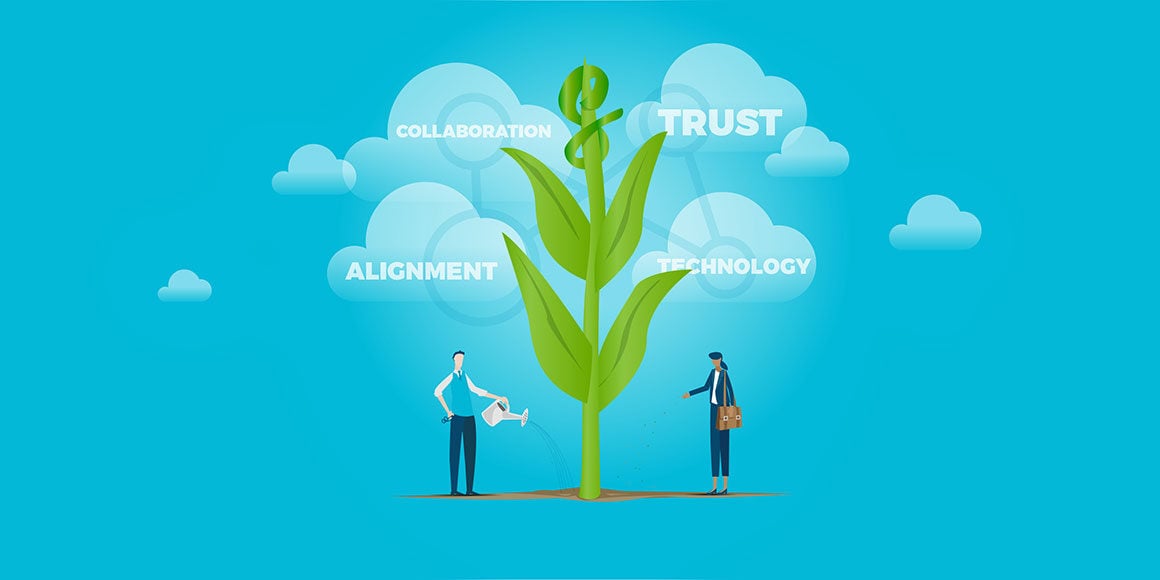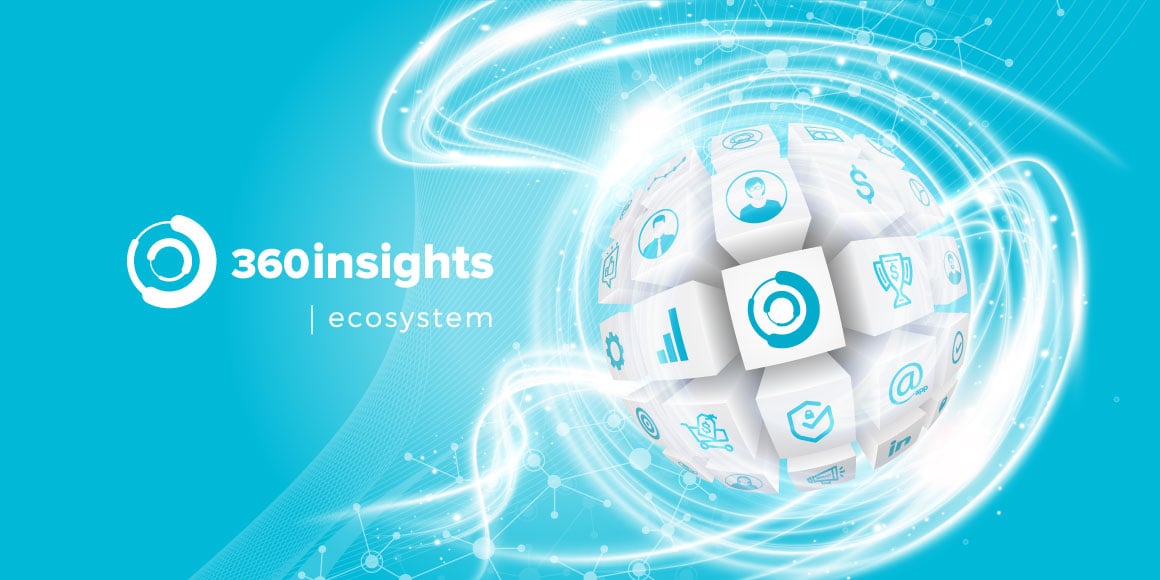Attending the Forrester B2B Summit North America is always a great way to get a pulse on the latest trends, market conditions, and tactics in the B2B landscape. This year was no different.
Considering our recent 360 Ecosystem launch, we were especially interested in the many conversations surrounding the shifts of go-to-market strategies to align with ecosystem management, channel management, and partner relationship management throughout the event. The insights and strategies discussed were not only timely but also aligned perfectly with our vision for creating a cohesive and collaborative business environment.
With that said, we left the summit with several key insights that reinforce the importance of partner ecosystem orchestration and a strong partner program. Here they are:
The orchestration of go-to-market ecosystems is a top priority for a majority of decision-makers
We’ve been shouting about ecosystem orchestration from the proverbial rooftops for a good while.
For those unfamiliar, ecosystem orchestration refers to the strategic alignment and coordination of various stakeholders—partners, alliances, customers, and internal teams—to create a cohesive ecosystem that drives mutual growth and success.
This approach leverages collaborative efforts to innovate, market, sell, and ultimately deliver superior customer experiences. It’s about creating a network where ecosystem partners contribute to and benefit from the collective value (and in doing so gain a competitive advantage). Participants share the joint objective of delivering a complete solution offering to the end customer, focused on ensuring customer delight every step of the way. As businesses increasingly rely on ecosystem partners to deliver value, understanding and implementing ecosystem orchestration becomes essential. And secondarily, moving away from legacy tools like traditional PRM software is crucial for a flourishing, modern partner program.
To do so:
Facilitate Cross-Department Collaboration
Break down organizational silos to foster cross-department collaboration. Implement regular interdepartmental meetings, shared project management tools, and integrated performance metrics to ensure all teams—sales, marketing, product development, and customer service—are working together towards a unified customer experience. This holistic approach will enable better alignment and more cohesive strategy execution.
Cultivate Trust-Based Channel Partner Relationships
Build and nurture strong, trust-based partner relationship management practices by establishing clear communication channels, maintaining transparency, and setting mutually beneficial goals. Regularly engage with partners through joint planning sessions, co-marketing initiatives, and collaborative performance reviews. This will create a foundation of trust and cooperation that is essential for a thriving ecosystem and partner program.
Ensure Continuous Alignment
Prioritize ongoing alignment between your internal teams, partner activities, and customer expectations. Use data analytics and customer feedback to regularly assess and refine your strategies. Implement flexible frameworks and regular check-ins to adapt quickly to market changes and ensure all ecosystem participants are synchronized in their efforts to deliver value.
Leverage Advanced Technology Platforms
Utilize robust technological platforms like the 360insights Ecosystem to streamline coordination efforts, provide real-time data insights, and enhance collaboration among stakeholders. These tools can help manage channel partner relationships, track key performance indicators (KPIs), and facilitate joint marketing and channel sales initiatives efficiently. Investing in the right technology infrastructure will enable better orchestration and drive mutual growth within the ecosystem.
Read: The Changing Tech Landscape of Ecosystem Orchestration
Product experts have become the most influential figures in the buying cycle
Developing product experts within your partner network is crucial for fostering deep understanding and enthusiasm for your offerings. Well-trained partners can effectively communicate your brand's value propositions, enhance customer experiences, and drive channel sales.
Here’s how you can do that:
Interactive Learning Modules
Utilizing interactive, gamified training modules that include quizzes, simulations, and scenario-based learning can significantly enhance partner engagement. Channel partners earn rewards for successfully completing these modules, which reinforces their learning while maintaining interest.
Offering Rewards and Recognition
Providing meaningful rewards such as points, badges, or levels for completing tasks or achieving goals effectively triggers the brain's reward system. Leaderboards showcasing top performers foster a healthy spirit of competition and recognition, driving sustained engagement and expertise development.
Creating Friendly Competition
Introducing elements of competition among partners through sales contests or quiz-based challenges encourages deeper engagement with the product. This not only motivates partners but also helps them demonstrate and expand their product knowledge in a competitive setting.
Progress Tracking and Feedback
Offering regular feedback and tracking progress helps partners visualize their development over time. This approach not only motivates continuous learning but also highlights areas requiring further improvement, ensuring a comprehensive understanding of the product.
Read: How Incentivized Learning can Benefit your Business
Buyer journeys are more complex than ever

In today's omnichannel marketing landscape, the buyer's journey has become an intricate web of self-guided pathways, third-party validations, and dynamic buying patterns. 74% of market leaders report that B2B buyers rely on third parties for purchase validation. This underscores the critical role of ecosystem orchestration and strategic partner collaboration. Businesses must align with partners to provide trusted sources of endorsement and diverse interaction types, ensuring they meet varying buyer preferences effectively.
Those who want to strengthen their omnichannel strategy should:
Leverage Marketing Development Funds (MDF)
Utilize available market funds to co-brand partner marketing assets, conduct joint promotions, and participate in industry events to maximize reach and impact.
Enhance Diverse Interaction Points
Create a seamless omnichannel experience by integrating various touchpoints such as social media, email, web content, and in-person events to cater to different buyer preferences and behaviors.
Provide Clear and Concise Information
Develop and distribute easy-to-understand content that educates and informs buyers at every stage of their journey, ensuring they receive consistent and valuable insights.
Align with Strategic Partners
Collaborate closely with partners to create co-innovated solutions, co-market effectively, and engage in co-selling initiatives, thus driving customer value co-creation.
Ecosystem orchestration represents a significant shift in how businesses operate, emphasizing collaboration, trust, and holistic value creation. It's the new era of partner relationship management, and it's an inclusive GTM motion rather than a siloed function. By aligning internal functions, partners, and customer expectations, companies can navigate the complexities of the modern market and achieve sustained success. The secret is in the purposefully cultivated ecosystem enablement design.
As we move forward, it's clear that ecosystem orchestration is not just a trend but a necessity for businesses aiming to stay competitive and relevant. By adopting this approach, tech professionals can position their organization and partner program for long-term growth and innovation.
For those looking to delve deeper into partner ecosystem orchestration, consider exploring the latest tools and strategies available. Stay informed, stay connected, and embrace the future of business with ecosystem orchestration.






